The Best Hardscape Materials for Landscape Pathways
August 22, 2018 | By webadmin
Hardscape features, such as pathways, don’t always get the respect and attention they deserve. A good landscape design will consider the hardscape just as thoughtfully as the plants that fill it. The materials chosen should compliment the surrounding plants and features – and lead you from place to place safely - and attractively.
But which materials should you choose for your purpose and style? Here we’ll break down some of the hardscape materials we like to use.
Pavers & Flagstone: The most popular choices for both pathways and patios, are pavers and flagstone. Manufactured pavers can be found in a variety of materials and colors - can even be custom stained. If you want formal symmetrical shapes, then pavers will offer you more uniformity. Natural flagstone will vary in shape and size, and is typically found in natural tones of sandy red, blue-grey and green-gray, or silver. Durable enough to withstand repeated traffic, it’s best to choose flagstone pieces with a thickness of at least 2” to prevent cracking. Flagstone can be installed into the soil naturally, or it can be mortared together.
Pro tip: Get a sample of the pavers or flagstone before you commit - and get it wet. Colors can darken and change dramatically when the stone is wet. Patterns in the paver or stone will also be more prominent. Make sure you like the look both wet and dry.
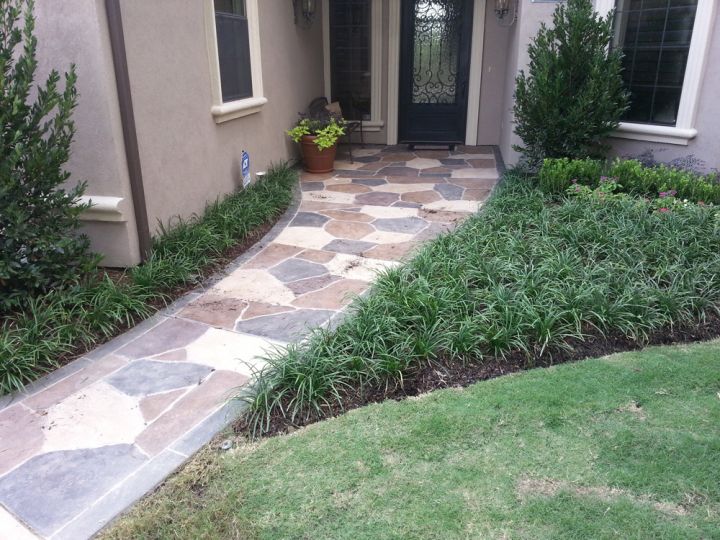
Using natural stone as a pathway (without mortar) creates an organic, meandering feeling to your landscape. These are great additions for pathways that don’t receive a ton of foot traffic since the stones can be slightly thinner than manufactured stone. Each stone has its own pattern and color, which in turn creates a unique setting to your landscape – one that won’t be found in the yard next door.
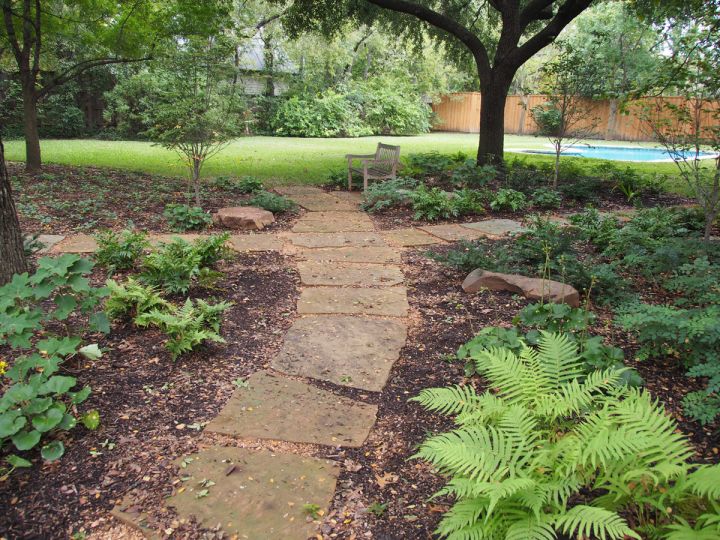
Brick: If you are looking for a traditional classic look, brick is often a good choice. Bricks can be set in custom patterns to create additional interest and are durable enough for even vehicle traffic when installed properly. The price tag for bricks can sometimes be a bit higher than some natural stones. You can use bricks in combination with, or to accent, stone pavers for high traffic areas and patios if you want to keep costs down.
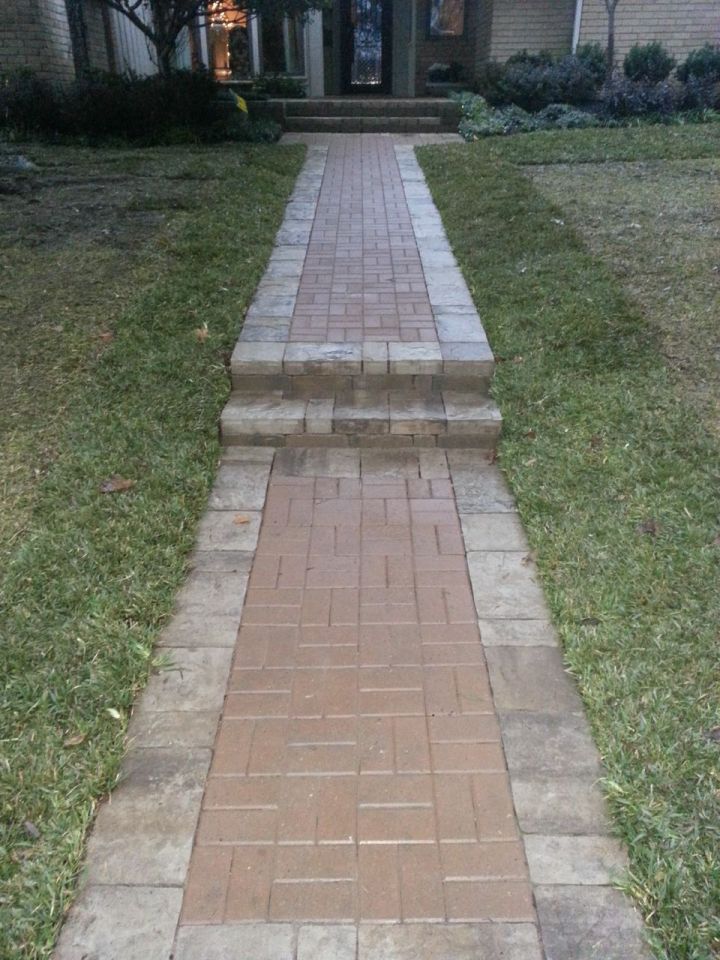
Gravel: Easy to install and budget-friendly, gravel is an easy choice for pathways if your landscape is larger or you prefer an natural, less traditional look. This type of material gives a natural and soft appearance. Over time, gravel will need to be replenished as is wears down and you may have to pull or spray the occasional weeds that pop up.
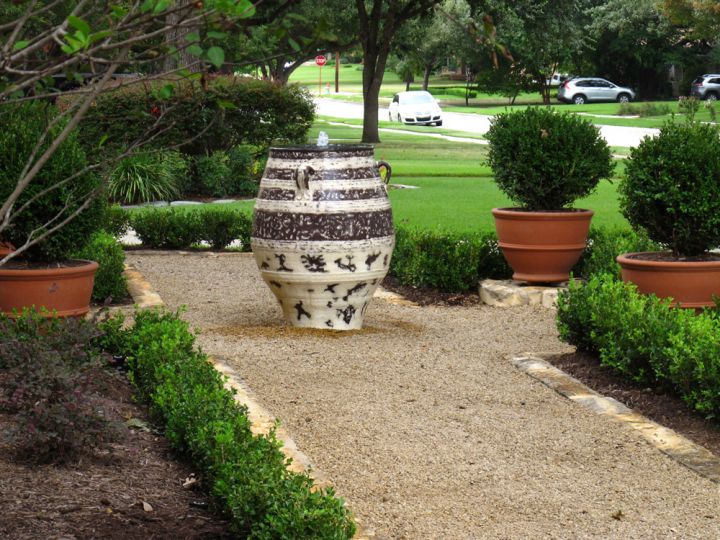
Pro-tip: Gravel is a permeable surface, so if you want to better manage water and runoff in your landscape, gravel is a good solution. It can also be used to create swales to direct landscape water away from your home or into better drainage areas.
For pathways we suggest selecting smaller sized gravel (1/4” minus as known in the trade) to avoid shifting when you walk on it. Larger gravel can be harder to walk on. It’s also necessary to compact the gravel after install to form a firmer surface. There are different colors of gravel to choose from.
Decomposed granite: Much like gravel, decomposed granite offers an affordable, easy to install option for pathways—with the added benefit of extra stability and less wash-away. The particles are much smaller than gravel, combined with a coarse sand-like texture. With a finer grade, decomposed granite can packed down tightly to create a stable surface for a patio, or used between larger stones as a filler.
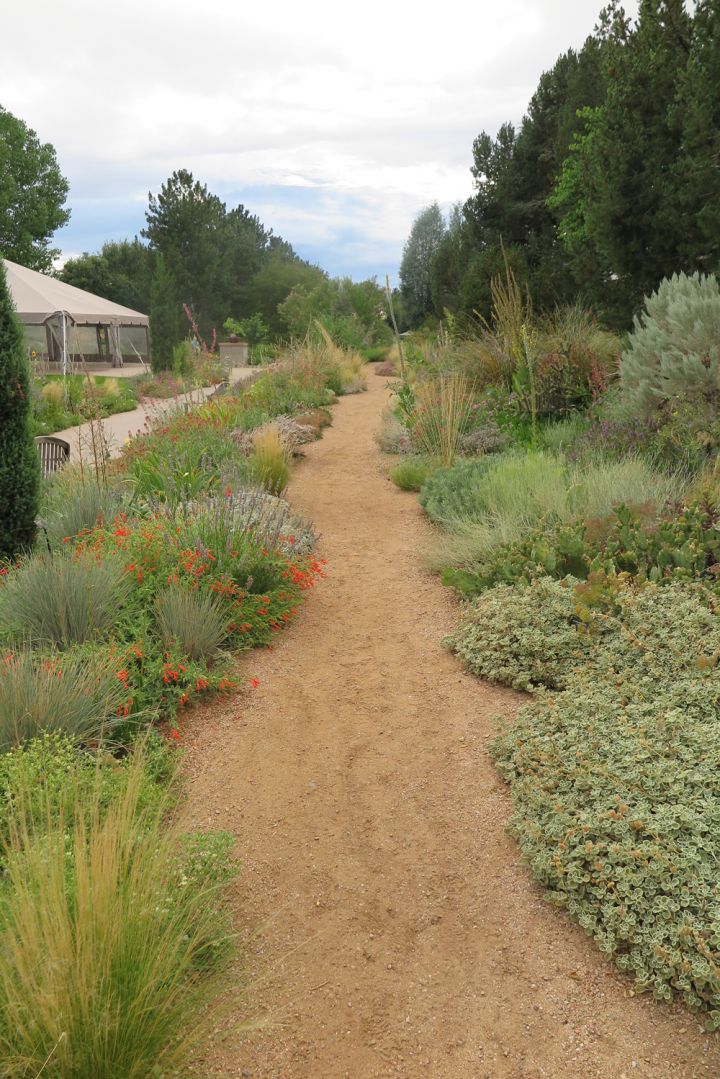
Decomposed granite is also great for pathways that get a lot of foot traffic, because it packs down so well. There are grey and red/orange colors available that can coordinate with different color schemes – red for desert planting schemes or grey for a modern, clean touch.
Mix it up: You can also mix any number of pathway materials together to create interesting patterns. River rock, natural pavers, and brick can all be combined for both aesthetics and walking comfort. Gravel and river rock are often used in between pavers and natural stone, but they can also be set in mortar for a more permanent pathway solution.
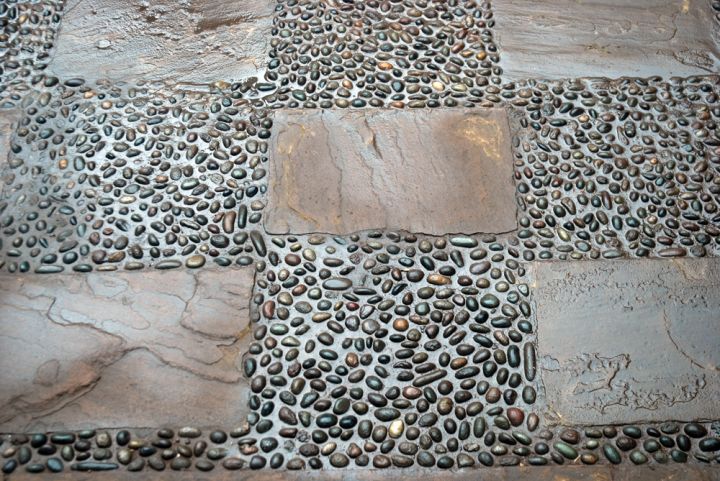
Pathways lead you through your garden and help create the connection between the hardscape and surrounding landscape. They can be a very important element of a successful outdoor space. Ultimately, choosing the best pathway design and materials depends on the style of your landscape. Our designers can help you coordinate with your already existing design, or create a new and distinct feel for your new landscape.
